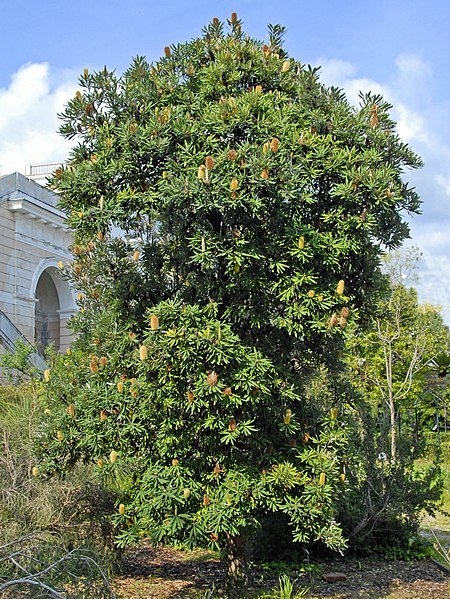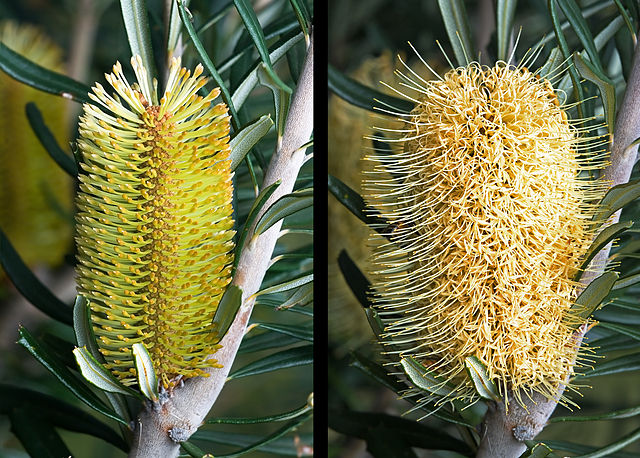Banksia serrata, commonly known as the saw banksia, the old man banksia, the saw-tooth banksia or the red honeysuckle and as wiriyagan by the Cadigal people, is a species of woody shrub or tree of the genus Banksia, in the family Proteaceae. Native to the east coast of Australia, it is found from Queensland to Victoria with outlying populations on Tasmania and Flinders Island. Commonly growing as a gnarled tree up to 16 m (50 ft) in height, it can be much smaller in more exposed areas. This Banksia species has wrinkled grey bark, shiny dark green serrated leaves and large yellow or greyish-yellow flower spikes appearing over summer. The flower spikes, or inflorescences, turn grey as they age and pollinated flowers develop into large, grey, woody seed pods called follicles.
Banksia serrata
Bark of Banksia serrata
Flowers of Banksia serrata in late bud, before flowers have opened
Flower spike in anthesis – flowers opened at bottom of spike (grey-yellow) and unopened at top (cream)
Banksia is a genus of around 170 species of flowering plants in the family Proteaceae. These Australian wildflowers and popular garden plants are easily recognised by their characteristic flower spikes, and woody fruiting "cones" and heads. Banksias range in size from prostrate woody shrubs to trees up to 30 metres (100 ft) tall. They are found in a wide variety of landscapes: sclerophyll forest, (occasionally) rainforest, shrubland, and some more arid landscapes, though not in Australia's deserts.
Banksia
Young Banksia inflorescence showing flower buds developing in pairs
B. marginata flower spike before and after anthesis
Seed separator of a silver banksia (Banksia marginata) with winged seeds still cohering








